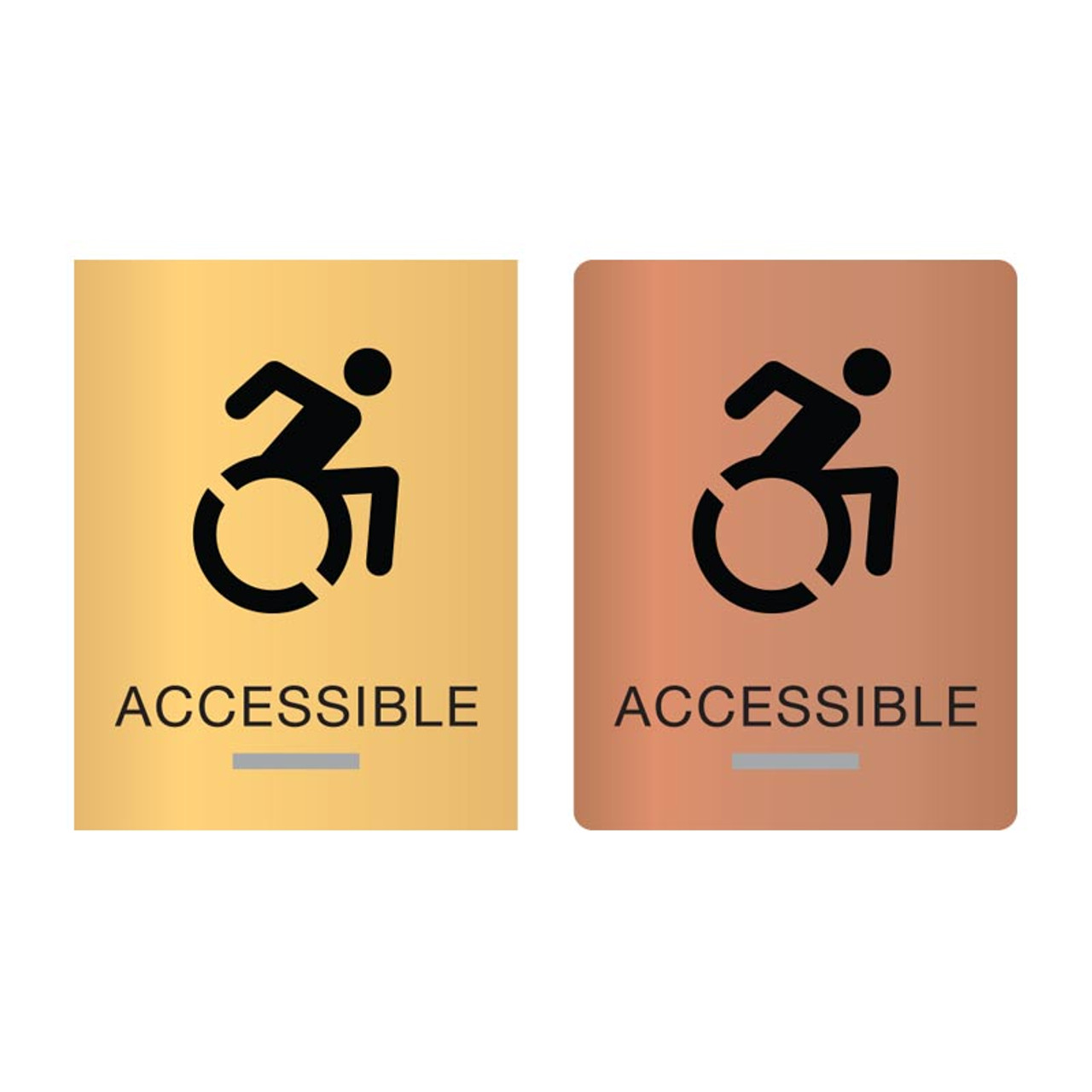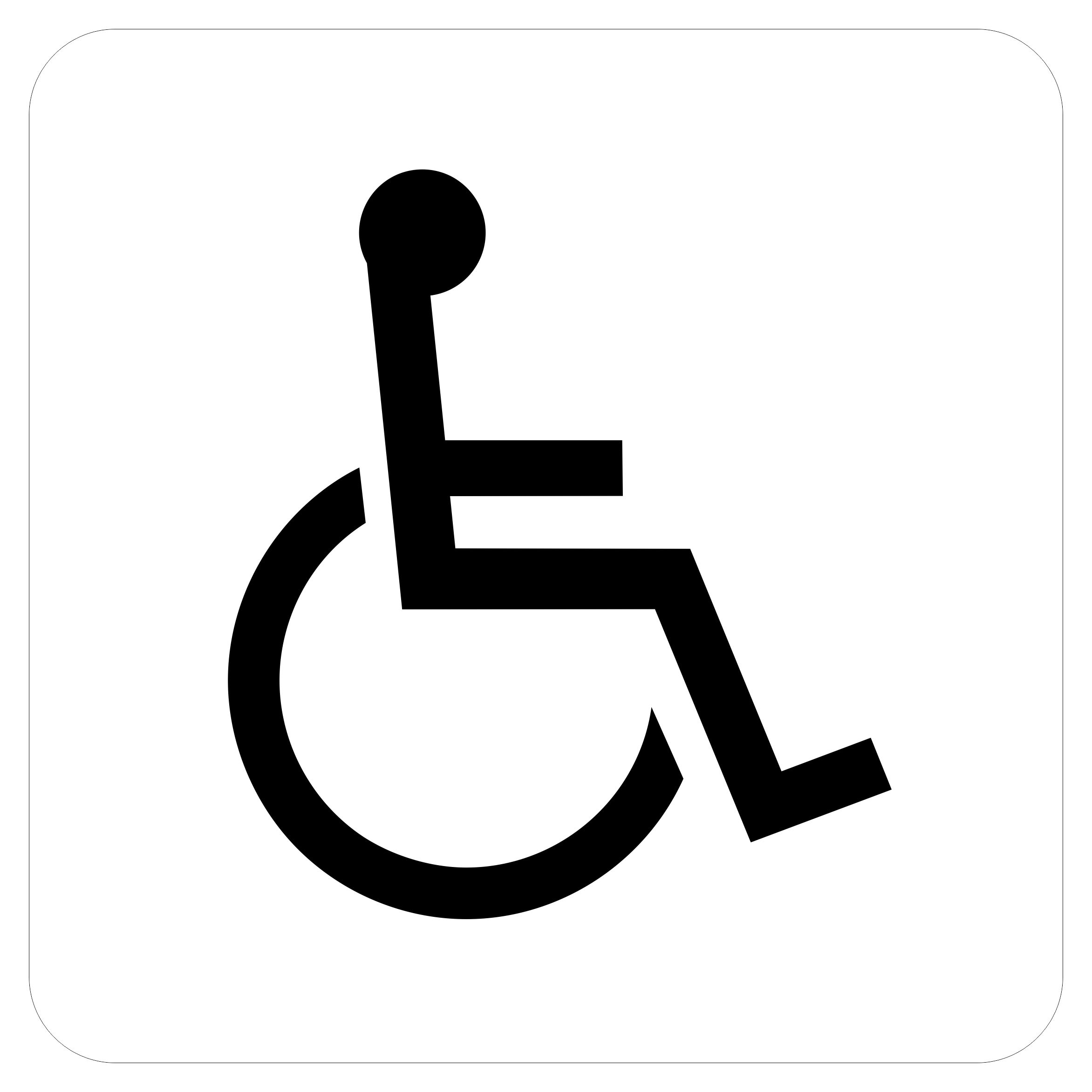Comprehending the Rules Behind ADA Signs
Wiki Article
ADA Signage: Making Certain Accessibility and Conformity in Public Spaces
ADA signs plays an important role in guaranteeing accessibility and conformity within public areas, considerably adding to a comprehensive setting for people with handicaps. As we explore the subtleties of ADA signage, from responsive functions to create ins and outs, it's vital to take into consideration exactly how these aspects integrate to promote the legal rights of all customers.Importance of ADA Signage
In contemporary society, the importance of ADA signage expands past simple compliance with lawful mandates to personify a dedication to inclusivity and access for all people. These indicators are vital in developing settings where people with impairments can browse public areas with the exact same ease and self-reliance as those without disabilities. By giving clear and standard details, ADA signs guarantees that everybody can access facilities, solutions, and information without barriers.The significance of ADA signage hinges on its capability to improve the lifestyle for individuals with specials needs by promoting equal access. It removes the obstacles that may otherwise prevent their capacity to participate completely in area life. In addition, these indications function as visible indications of a company's devotion to diversity and equal rights, reflecting wider societal values that champion the civil liberties and dignity of all individuals.
In addition, ADA signage plays an essential role in public safety. By assisting individuals to departures, restrooms, and various other vital facilities, it makes sure that all individuals, despite physical ability, can leave safely during emergency situations. In summary, ADA signs is not just a regulative need however a powerful tool for fostering a equitable and inclusive culture.
Key Elements of Compliance

Placement is crucial; indications should be mounted in places that are reachable and conveniently noticeable. Usually, signs must be placed between 48 and 60 inches from the ground to ensure accessibility for both standing and mobility device customers. Tactile components, such as Braille, are crucial for individuals with visual problems, providing vital info in a non-visual style.
High-contrast shades in between the text and history are needed to improve readability for individuals with reduced vision. The ADA mandates details contrast proportions to ensure clarity. Furthermore, personality dimension is a vital factor to consider, with minimal height requirements dictated by the seeing range to guarantee readability from various angles.
Layout Factors To Consider for Access
Designing accessible signs calls for a meticulous method to guarantee it meets the demands of all customers, especially those with handicaps. This includes thinking about numerous design components that improve readability and usability. Key factors consist of the selection of font style, shade comparison, and tactile features. Fonts must be sans-serif, with basic and clear letterforms, to assist in simple reading. The size of the message is just as critical, with ADA guidelines recommending a minimum height based upon viewing distance to make sure clarity.Contrasting colors between text and history are essential for exposure, particularly for individuals with aesthetic disabilities. Additionally, tactile aspects, such as Braille and increased characters, are crucial for individuals who are blind or have reduced vision.
Furthermore, the placement of signs plays a substantial duty in access. Signs must be mounted in places that are easily obtainable and unhampered. Guaranteeing that signage is placed at suitable elevations and angles makes it possible for all individuals, including those making use of wheelchairs, to communicate with them efficiently.
Typical Blunders to Avoid

An additional prevalent mistake is the incorrect placement of signage. ADA standards define exact elevation and location requirements to make sure that indications website link are obtainable and conveniently visible by all people, consisting of those making use of wheelchairs. Neglecting these guidelines not only obstructs availability but likewise takes the chance of non-compliance with legal standards.
Furthermore, not enough contrast in between text and history is a constant oversight. Ample comparison is important for readability, especially for people with low vision. Developers sometimes pick shades that are aesthetically enticing however visite site do not have the necessary comparison, providing the text hard to recognize.
Lastly, some designers fail to integrate responsive components, such as Braille, which are important for people that are blind. Leaving out these attributes not just leads to non-compliance with ADA laws yet likewise restricts access for a section of the population that depends on responsive information.
Future Trends in Signage
Innovations in innovation and boosting awareness of inclusivity are forming the future trends in signs design. Digital signs, for instance, is developing to consist of real-time updates and interactive attributes, which can be essential in supplying dynamic info in public areas.One more emerging fad is the utilization of increased reality (AR) to boost individual experience. AR-enabled signage can overlay digital details onto the physical environment, providing visually impaired individuals with auditory or haptic feedback. ADA Signs. This technology not only enhances availability however additionally creates an engaging experience for all customers
Sustainability is additionally a significant factor affecting signs fads. Environment-friendly products and energy-efficient lighting options are being prioritized to straighten with worldwide ecological goals. Improvements in products science are leading to the advancement of even more weather-resistant and durable indications.
Final Thought
ADA signs plays a vital role in guaranteeing accessibility and compliance within public areas by integrating responsive components, high-contrast shades, find out and strategic positioning. The adherence to ADA criteria not just facilitates risk-free navigating for individuals with handicaps yet also signifies an organization's dedication to diversity and inclusivity. By staying clear of typical blunders and welcoming future patterns, public rooms can proceed to advance these values, ensuring that the civil liberties and dignity of all individuals are valued and upheld.ADA signage plays a vital duty in guaranteeing availability and compliance within public spaces, dramatically adding to an inclusive atmosphere for people with disabilities. As we explore the nuances of ADA signage, from responsive functions to develop intricacies, it's crucial to think about just how these aspects integrate to promote the civil liberties of all users.In modern-day culture, the significance of ADA signs prolongs past mere conformity with lawful mandates to personify a commitment to inclusivity and ease of access for all people. By supplying clear and standardized details, ADA signage makes sure that every person can access facilities, services, and details without obstacles.
ADA signage plays an essential duty in assuring accessibility and compliance within public rooms by integrating tactile components, high-contrast shades, and tactical placement. (ADA Signs)
Report this wiki page